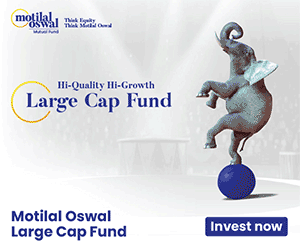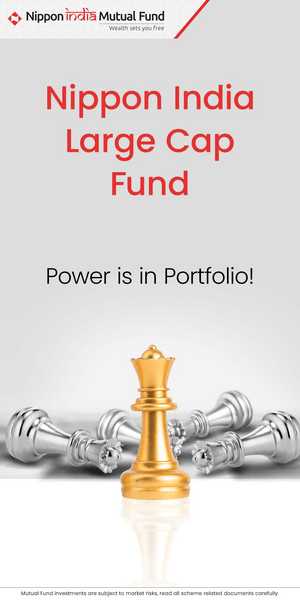Product Tenure and Objective

Yesterday a good friend who happens to be a prospect as well asked, Vinayak how does it matter that all the products give more or less the same return, then why not only one product i.e. Bank FD for 10 years. Her bank is offering 9.5% for 10 years.
This compelled me to write this article. How a product needs to be understood and the objectives they are supposed to meet on the basis of their tenure. Let me try to put it in table :
| Product | Tenure | Objective |
|---|---|---|
| Bank FD, Liquid funds, ultra short term funds | Less than one year | Liquidity with some extra return over normal a/c |
| Bank FDs, income funds | Upto three years | Extra returns with liquidity |
| Hybrid funds | Three years to five years | Better return than FDs, liquidity |
| Equity funds | More than five years | Capital appreciation, Liquidity |
| SIP in equity funds | Min 7 years | To achieve high priority long term goals |
The objectives written above are in the order of priorities which means the liquid fund should be looked for first as liquidity then return, similarly while investing into equity one should keep the capital appreciation as top priority even if it offers liquidity that automatically sets condition for long term investing.
Let's look at how as an investor we tend to behave. First of all people buy an endowment plan of life insurance which becomes a liability over next 15-20 years. The premiums are high for a miniscule life cover. Returns are so poor that I didn’t feel like putting it in the above table.
Bank FD which is for our short to medium term objective we keep it for 5-10 years, where as its primary objective is to offer liquidity with moderate returns. But what we liquidate the first is ‘Equity’, which is a long term investment and may take longer to deliver.
Now let us look at the returns part. Assuming that long term FD and Equity mutual fund both will give 10% return, which is not a fair comparison in favour of equity funds because they have delivered much higher returns.
| Product | Returns | Tax | Inflation | Real Return |
|---|---|---|---|---|
| 1-3 years FDs | 8% | 30% | 8% | -2.4% |
| Income funds 2-3 years | 8% | 10% (Long term capital gain) | 8% | -0.8% |
| 5-10 years Bank FDs | 10% | 30% | 8% | -1% |
| AAA Tax free bonds for 10 years | 8.4% | NIL | 8% | 0.4% |
| Equity mutual fund for 10 years | 10% | NIL | 8% | 2% |
- Assumption 1: Highest tax bracket is considered
- Assumption 2: Surcharge and education CESS is not considered for calculation simplicity
- The above table is for illustration purpose only. The actual returns offered by Banks may vary
The above table clearly suggests that when one is looking for returns, it's the real return i.e. (Real Return= Return-tax-inflation). The table suggests that only equity has given positive real return over 10 years, does that mean should I put all my money in equity, the answer is big 'NO'. The overall portfolio should be able to beat the inflation over longer period and for short term to medium term needs (read 1-3 years) liquidity should be the highest priority.
In the above table the assumption for equity returns has been taken as very conservative. Over 10 years period one should expect 12-15% return from this asset class. But as I keep mentioning 'Patience is the key'. Life is a marathon so is equity.
Very often investors pull out money from equity or discontinue their SIPs after 2-3 years to fund their medium term needs and most of the time at a loss by not giving enough chance to the asset class which has a huge potential to deliver great returns over longer period because they can’t touch or STOP their endowment life policy and the FDs which is of longer tenure.
If one sets the priorities right as mentioned in the table and align it to the financial goals, journey should be very happy and peaceful.
Happy investing!
Disclaimer: Mutual fund investments are subject to market risks. Please read the scheme related documents carefully before investing.
Queries
-
What is the benefit of mutual fund STP
Aug 29, 2019
-
How much to invest to meet target amount of Rs 2 Crores
Aug 26, 2019
-
Can I achieve my financial goals with my current mutual fund investments
Aug 24, 2019
-
Can you tell me return of various indices
Aug 19, 2019
-
What would be the post tax return on different investments
Aug 18, 2019
-
Which Principal Mutual Fund scheme will be suitable for my retirement corpus
Aug 16, 2019
-
What is the minimum holding period for availing NCD interest
Aug 4, 2019
Top Performing Mutual Funds
Recommended Reading
Fund News
-
Edelweiss Mutual Fund launches Edelweiss BSE Internet Economy Index Fund
Apr 25, 2025 by Advisorkhoj Team
-
Bajaj Finserv Mutual Fund launches Bajaj Finserv Nifty 50 Index Fund
Apr 25, 2025 by Advisorkhoj Team
-
SBI Mutual Fund launches SBI Income Plus Arbitrage Active FOF
Apr 23, 2025 by Advisorkhoj Team
-
Motilal Oswal Mutual Fund launches Motilal Oswal Infrastructure Fund
Apr 23, 2025 by Advisorkhoj Team
-
Groww Mutual Fund launches Groww Gilt Fund
Apr 23, 2025 by Advisorkhoj Team













